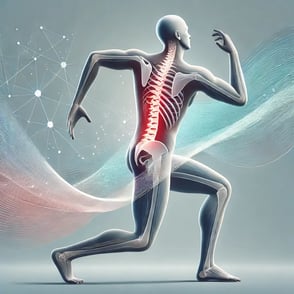Why "Rest is Best" Is a Myth
How movement helps you rebuild trust after injury and chronic pain
“I was told not to do anything until the pain went away.”
It’s one of the most common phrases I hear from new patients.
They’ve been told to avoid squatting.
Avoid stairs.
Avoid running.
Avoid lifting anything heavier than a gallon of milk.
But here’s the problem: they weren’t told what they could do.
They were given fear without direction.
Rest without a plan.
And so they stopped moving.
Weeks pass. Then months.
The pain is still there. Now it’s joined by weakness, fear, and a growing belief that their body just “doesn’t work anymore.”
When Rest Becomes a Trap
Let’s be clear: rest has a role.
In the immediate aftermath of an injury, your body needs time to protect, calm down, and begin the tissue healing process.
But rest is not a long-term strategy.
It’s a stage—not a solution.
When rest is overprescribed—especially for chronic issues—it becomes the very thing that prevents healing.
Here's what prolonged inactivity can do:
-
Weaken muscles that were already underperforming
-
Stiffen joints and limit mobility
-
Reduce tissue tolerance to even basic movements
-
Increase nervous system sensitivity (everything starts to feel “too much”)
-
Fuel fear, hesitation, and identity loss
You don’t just lose strength.
You lose agency.
Redefining What Rest Actually Means
Rest is not the absence of activity.
It’s the presence of intentionality.
For someone in an acute phase, rest might mean true stillness.
For someone months into persistent pain, rest might mean baseline movement—just enough to tell the nervous system, “This is safe. We can do this.”
Rest looks different for everyone:
-
For a 75-year-old, it might mean walking laps around the house
-
For an athlete, it might mean scaling back intensity—but still showing up
-
For someone stuck in fear avoidance, it might mean just stepping up onto a curb again—without flinching
It’s not about doing nothing.
It’s about doing the minimum effective dose—the smallest possible challenge that creates forward momentum without overload.
What Movement Actually Does
Movement isn’t just about strengthening muscles.
It’s about retraining your nervous system to interpret sensation differently.
Safe, supported loading helps:
-
Improve blood flow to healing tissues
-
Regulate the nervous system’s sensitivity
-
Rebuild motor control and coordination
-
Give your brain evidence that movement isn’t dangerous
-
Restore confidence, capacity, and clarity
This is what most recovery plans miss.
They treat pain as damage. → [ break this down further in What Most People Get Wrong About Healing]
They tell you to rest until the pain goes away.
But pain and damage aren’t always the same thing—and waiting for zero pain before you move just keeps you stuck.
The Real Risk? Doing Nothing.
You might think avoiding discomfort is keeping you safe.
But here’s the truth: prolonged avoidance creates its own injury.
You lose strength.
You lose range.
You lose trust in yourself.
The nervous system becomes more reactive, not less.
And over time, what was once a simple strain becomes a story about how your body can’t be trusted.
A Better Path: Graded Exposure and Progressive Loading
Instead of avoiding pain altogether, we look for the entry point. → [Our approach to finding that entry point is explained more in A Holistic, Full-Body Approach to Rehab]
Where can we start without triggering fear?
What can your body handle right now?
We don’t throw people into the deep end.
We build the bridge, one step at a time.
That’s how we reduce sensitivity.
That’s how we build resilience.
That’s how people go from fear to freedom—without needing someone else’s permission to move again.
Final Word
If you’ve been told to “just rest” for weeks or months—
If you’ve been waiting for pain to magically go away—
If you feel like your body betrayed you—
Please know:
You are not fragile.
You are not broken.
You’ve just been misinformed.
Rest isn’t the enemy.
But relying on it alone will keep you stuck.
It’s time to move forward—wisely, intentionally, and with someone who knows how to meet you exactly where you are.
👉 [Book a Full-Body Movement Assessment]
Let’s find your entry point, and start rebuilding trust.
Tags:
Chronic Pain, Root Cause, Injury Recovery, Nervous System & Pain, progressive overload, Rest vs Movement, Functional Rehab, Fear-AvoidanceApril 21, 2025
.png?width=322&height=138&name=Revenant+long+logo+(white).png)


-1.jpeg)
.jpeg)
-1.jpeg)
-1.jpeg)
-1.jpeg)
.jpeg)
.jpeg)
-1.jpeg)
Comments